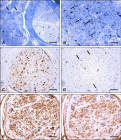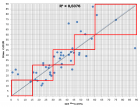Table of Contents
Estimation of the level of alcohol consumption in Russia: A literature review
Published on: 30th December, 2020
OCLC Number/Unique Identifier: 8882673885
Background: the level of alcohol consumption per capita is an important indicator of the alcohol-related problems. However, it is difficult to estimate the real level of alcohol consumption, since part of the consumption comes from illegal sources.
A... im: an overview of studies estimating the overall level of alcohol consumption in Russia.
Methods: in this review, 9 articles were analyzed estimating the overall level of alcohol consumption in Russia.
Results: in the period from 1956 to 2015 the overall level of alcohol consumption was subject to significant fluctuations: it grew almost linearly in the period from 1965 to 1979; decreased markedly in 1981; declined sharply between 1984 and 1987; rose sharply between 1991 and 1994; decreased significantly between 1995 and 1998; then increased significantly in the period from 1999 to 2003, after which it began to decline. The lowest estimate of the level of alcohol consumption for the entire period under consideration was obtained using the method proposed by Razvodovsky (7.25 litres - 1987), and the highest - using the method proposed by Norstrom (19.64 litres - 1994).
Conclusion: despite a significant decrease in the level of alcohol consumption in Russia over the past decade, this level remains high. Show more >
Sexual addiction, self-esteem and personality dimensions
Published on: 20th February, 2020
OCLC Number/Unique Identifier: 8554459872
Sexual addiction is a growing reality. The acknowledgment of this disorder requires to identify vulnerability factors. Besides, it would improve the management and treatment of these people. We used a cross-sectional study with a sample of voluntary ... subjects recruited online anonymously. A prepared questionnaire explored the general and clinical data of the sample. The psychometric scales used were: Carnes Sexual Addiction Screening Test, the French Big Five Inventory for personality dimensions and the Rosenberg Scale for self-esteem. Five hundred and ten individuals were included. 38 people (8%) had sexual addiction. 68 people (13%) had attenuated symptoms of sexual addiction. The average age of the group with sexual addiction was 30.8 years with a male predominance. The majority had a higher academic level, was single (39.5%) and are working (73.7%). Our study revealed that self-esteem was below average in 73.7% of people with sexual addiction. Concerning personality dimensions, individuals with sexual addiction had higher scores in Neuroticism. The analytic study showed that four variables were statistically correlated with sexual addiction: male sex; low self-esteem; a large N dimension and a low C and E dimension. The concept of sexual addiction, still poorly defined, is beginning to be recognized. The need for more research is required to identify the factors of vulnerability with the aim of developing the preventive axis and improving the quality of life. Show more >
Assessment of physicians’ knowledge, attitudes, and practices regarding smoking cessation management in the Gaza Strip
Published on: 11th February, 2020
OCLC Number/Unique Identifier: 8549664436
Background: Despite its negative effects, approximately 23% of Palestinians (≥ 18 years) smoke cigarettes. Studies have shown physicians to be an important channel for smoking cessation intervention. This investigation examines physicians’ smoking-re... lated knowledge, attitudes, and behaviors in the Gaza strip (Palestinian Territories).
Methods and findings: A convenience sample of 154 physicians in medical and surgical units took part in this investigation (87.7% response rate). The data show that 37.8% of physicians in Gaza smoke, and most of them about 72% smoke in the hospital’s public spaces, thereby implicitly giving public approval for smoking. While 82.4% reported that they advise patients who smoke to stop, the majority (59%) also believe that their own smoking habits negatively influence the impact of that advice.
Unfortunately, our survey showed that physicians’ knowledge levels towards smoking addiction and management were lower than expected (e.g. only 34% knew that nicotine dependence is a psychiatric disorder that necessitates treatment). The physicians in this study believed that the primary barriers to failure of their patients’ smoking cessation were the perceived lack of will (81.3%), and the strength of patients’ addiction (67.9%). Moreover, (61%) of physicians did not spend enough time to convince their patients to quit smoking.
Conclusion: Smoking is common among Gaza-strip physicians, and unfortunately, most of them smoke in the hospital’s public spaces. Many obstacles face the smoking cessation program that some physicians linked it to patients, and others linked it to the health-care system. Furthermore, smokers in Gaza receive poor care regarding assessment, referral, and management of their smoking habit. Show more >

HSPI: We're glad you're here. Please click "create a new Query" if you are a new visitor to our website and need further information from us.
If you are already a member of our network and need to keep track of any developments regarding a question you have already submitted, click "take me to my Query."


















































































































































